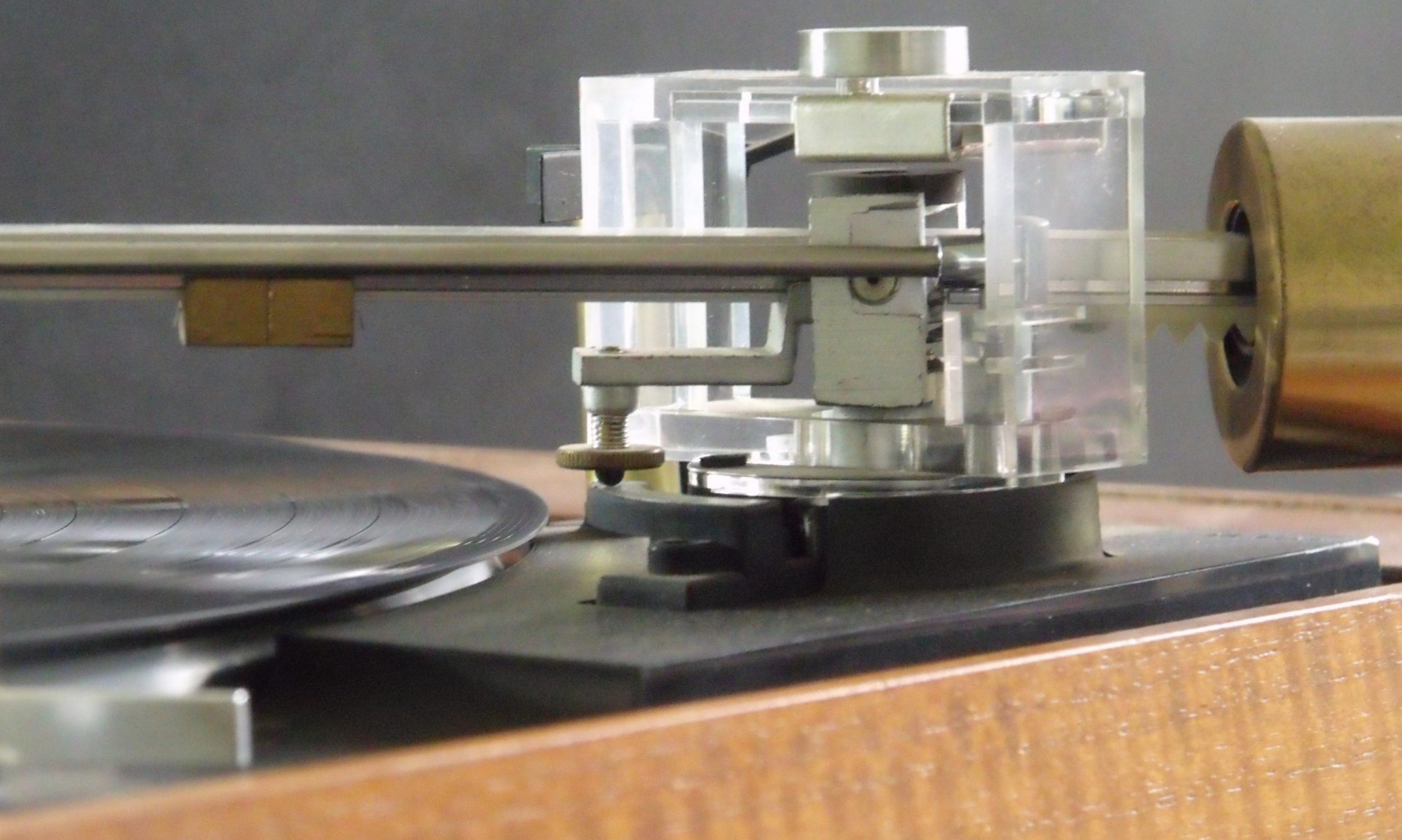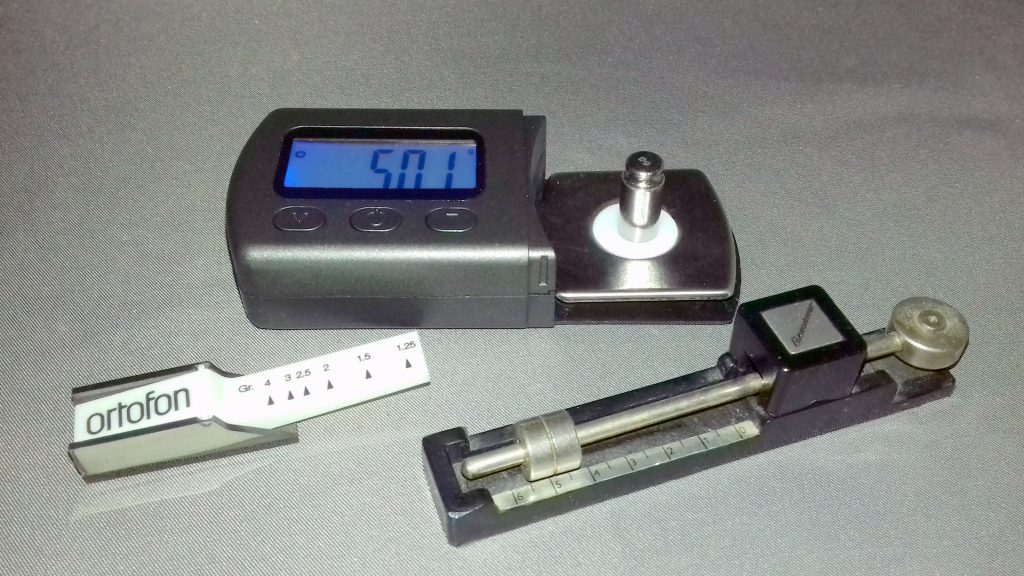
Few would disagree that setting the tracking pressure is an important part of configuring and adjusting a turntable for best performance. But what should you use to check the pressure and how do you chose what setting to use?
The majority of turntables have the means to set the tracking force without recourse to a gauge. On my Dual 505 there is a dial to adjust, my Pioneer PL-512 has an adjustable balance weight, and the Garard SB100 has a weight which you move along the arm. In all these cases there is a calibrated mark which you line up with to get the desired force. Despite this, I currently own four stylus gauges.
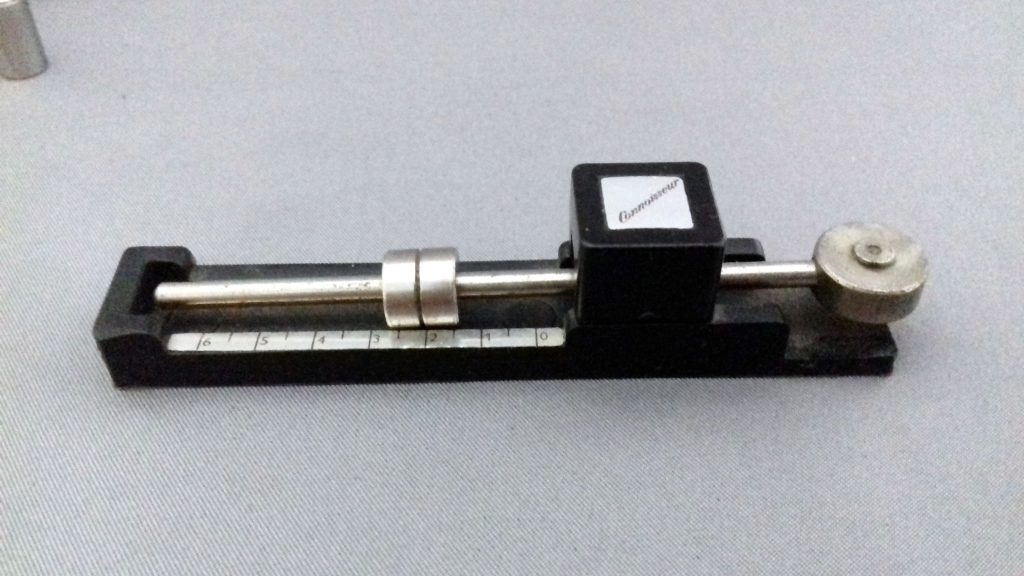
This is an old example which has a range of 0 – 6g with a resolution of just 0.5g. Tracking at higher forces used to be commonplace, but with modern cartridges half that capacity would be plenty. All in all this is a crude instrument, but fine for it’s time.
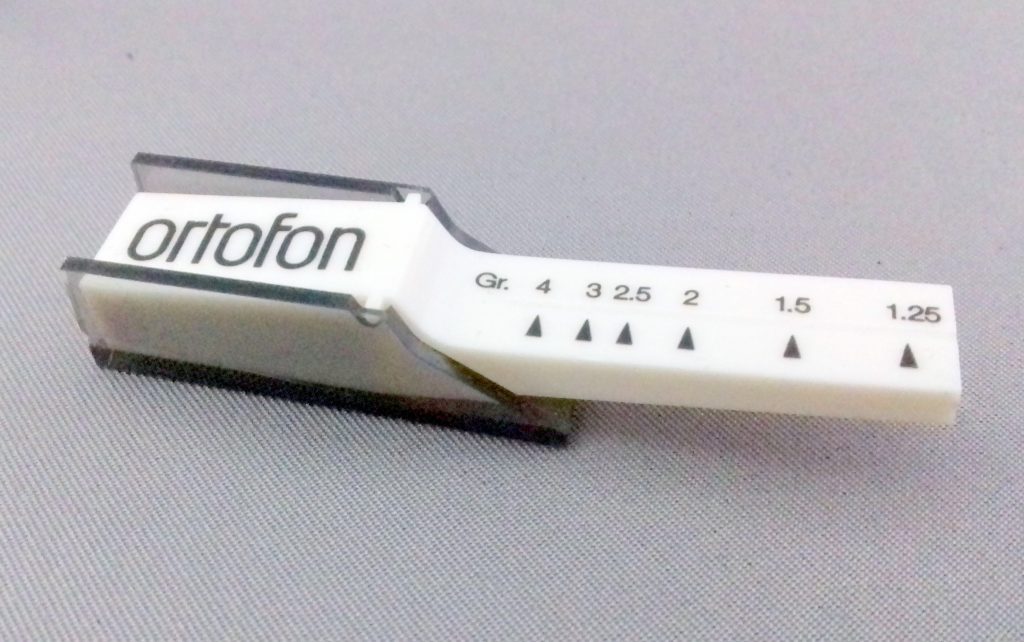
This is the current offering from major cartridge manufacturer Ortofon. Costs about £8 on line. The range is a more appropriate 1.25g – 4g. Resolution is down to how accurately you think you can locate the stylus on the gauge. I would say about 1/4 g.
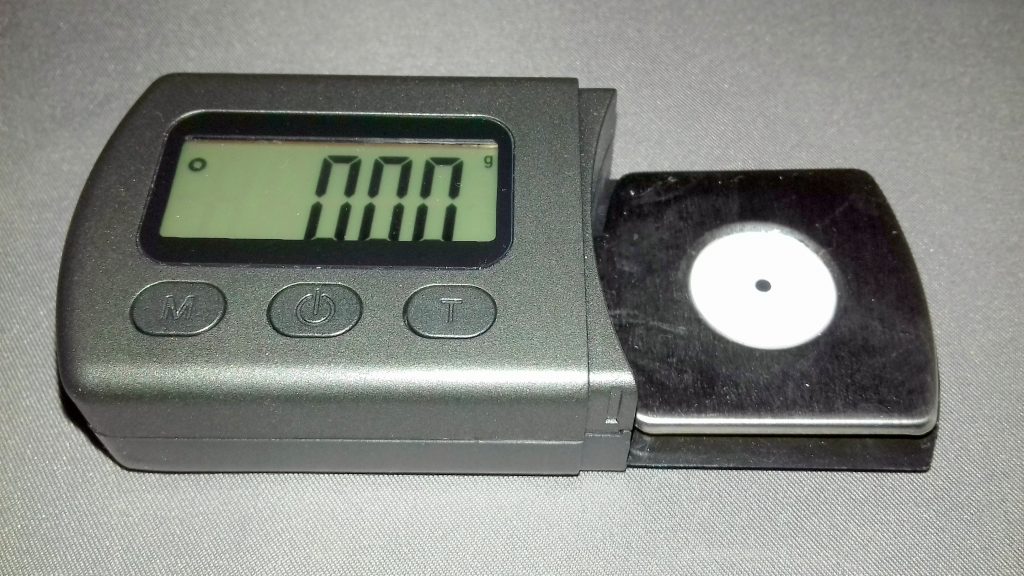
For about the same money you can have a generic un-branded digital stylus gauge. This has a range of 0 – 5g. The resolution is an impressive 1mg. That’s better than 1%. As for accuracy, it comes with a calibration weight, which puts it head and shoulders above the others. Branded versions of this can be had for about £30, if you care about such things. Some have a four digit display, giving a resolution of 0.1mg.
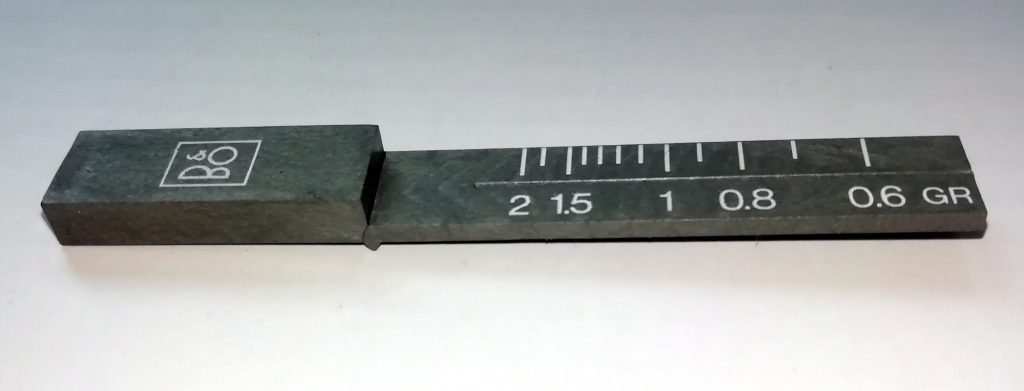
This is a rarity. I recon this very simple balance is about 40 years old. it’s a very simple crude device, but the Bang & Olufsen branding makes it special. This is particularly so because they have not made turntables for decades.
Cartridge manufactures typically specify a range of recommended tracking forces Here are some examples which I have myself used.
| Make | Model | Min | Recommended | Max |
|---|---|---|---|---|
| Goldring | 1006 | 1.5 g | 1.7 g | 2.0 g |
| Goldring | E3 | 1.5 g | 2.0 g | 2.5 g |
| Audio-Technica | AT91 | 1.5 g | 2.0 g | 2.5 g |
| Ortofon | Om5e | 1.5 g | 1.75 g | 2.0 g |
This wide range is quoted to allow for a wide variety of factors including: manufacturing tolerances in the cartridge, different tracking capabilities of your turntable and arm and differences in your records.
The greater the tracking force the greater the record wear, suggesting that we should aim for the lightest tracking force possible. This is indeed a good plan. However there is a problem. If there is insufficient force the stylus will lose contact with the record and rattle about in the groove, bouncing off the sides and causing untold damage. This is a situation to avoid at all costs. A lot of damage can be done very quickly. Over pressure is less damaging than allowing the stylus to miss-track. The ideal scenario is to use just sufficient tracking force to ensure constant contact under all playing conditions.
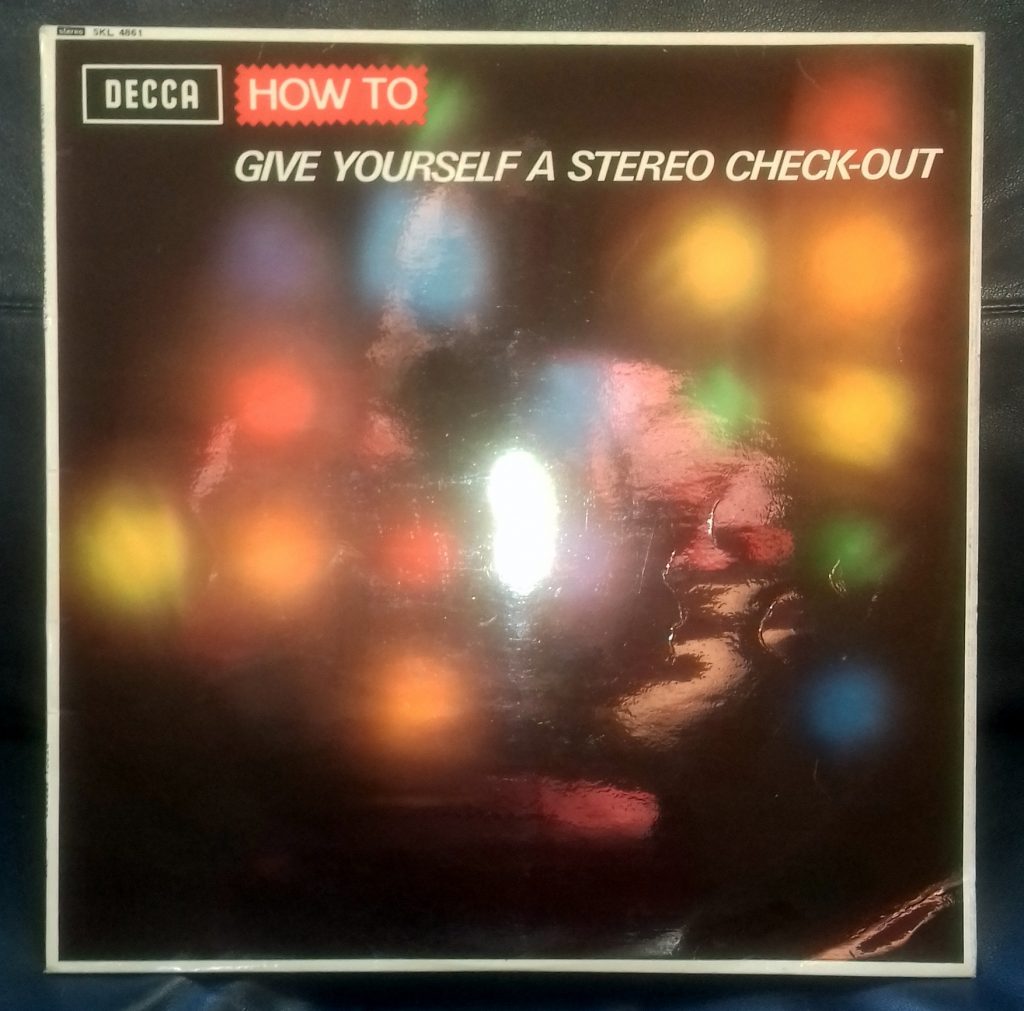
This begs the question, can you achieve this by experimentation? You could use a test record. My test record has tracks with various musical instruments recorded at increasingly loud levels for just this reason. But what if you have even louder records in your collection? Some 12″ singles are really heavily modulated and will likely cause miss-tracking if you are too light.
There are an awful lot of variables involved in setting tracking force. The absolute optimum setting for you will depend as much on your record collection as your equipment. It’s probably not worth over thinking it unless you have the hearing of a 16 year old concert pianist. I bow to the expertise of the cartridge manufacturers who provide us with a recommended force and a broad range in which to experiment.
It’s probably worth having a stylus gauge that looks cool and is easy to use, but it certainly isn’t worth spending a load of money on a high resolution digital beast with a major brand name on it. Use it to check that you are in the right ball park. Also, if you are in the habit of changing cartridges, it will help you set up “as before” without all the hassle of experimenting again
To answer my opening question of what you should use to measure stylus pressure; Use your ears.
